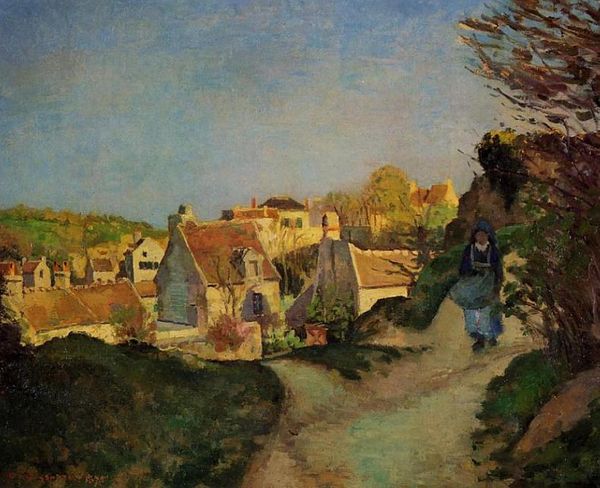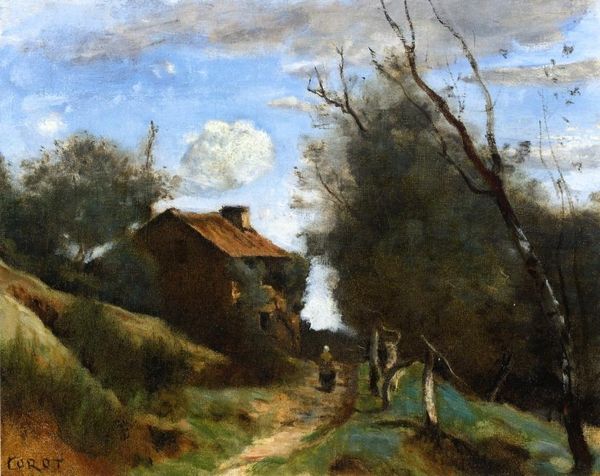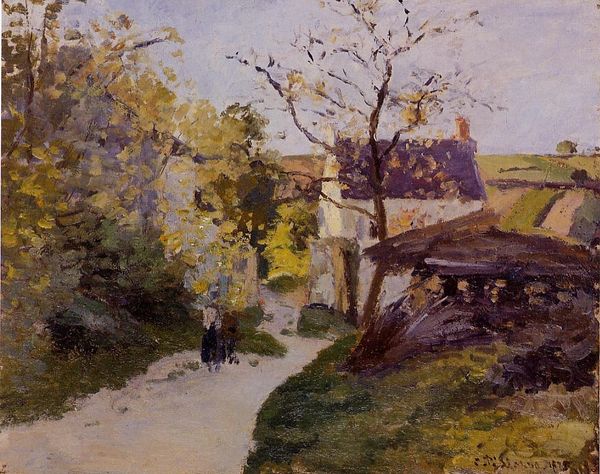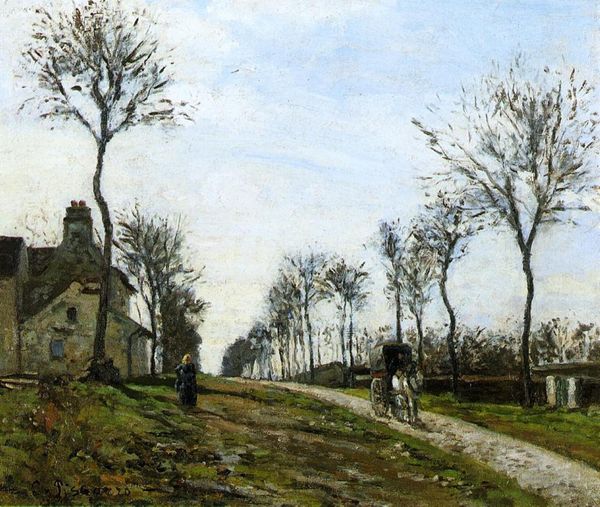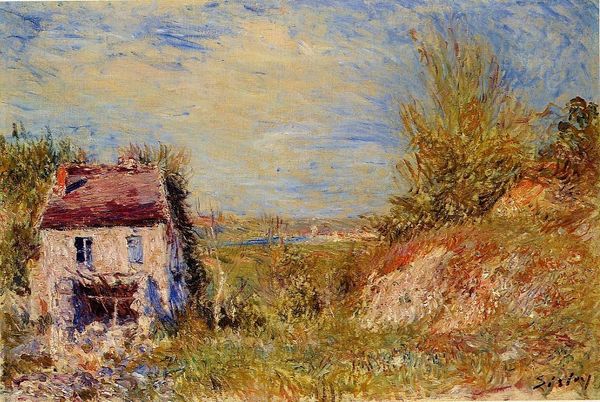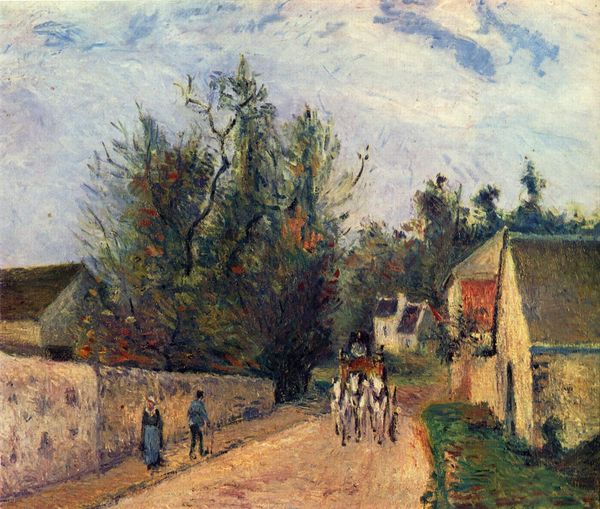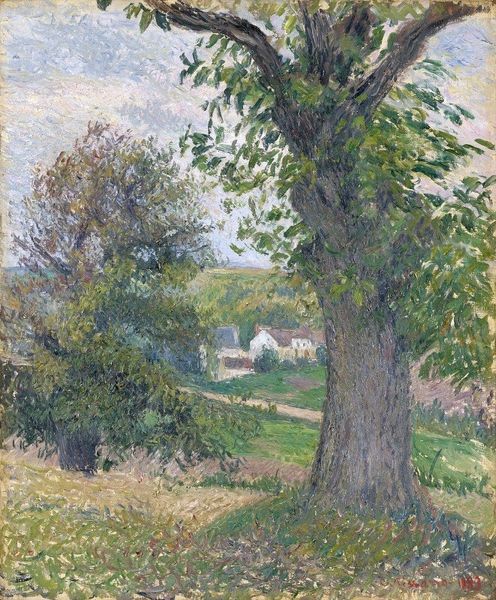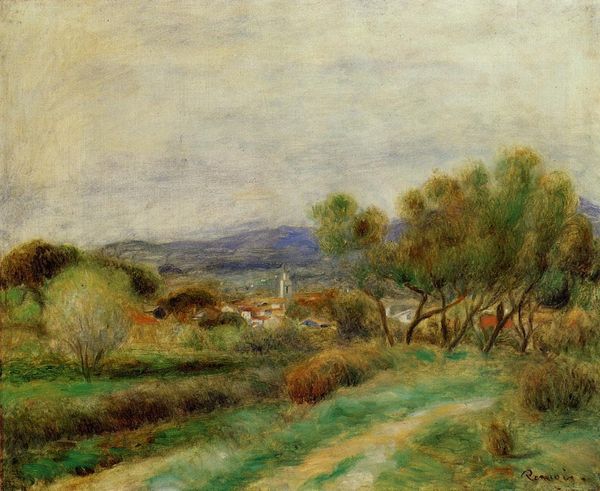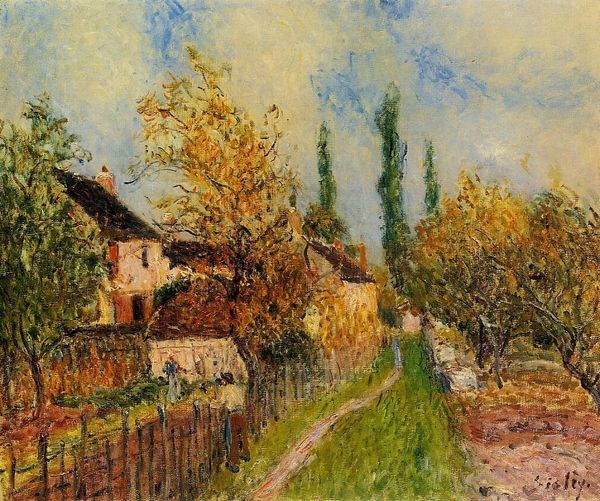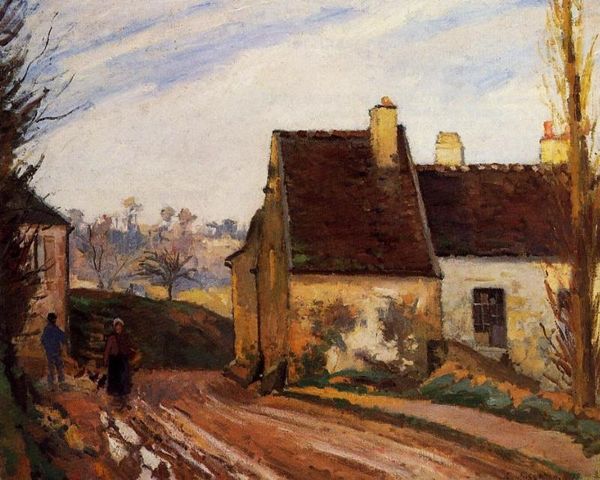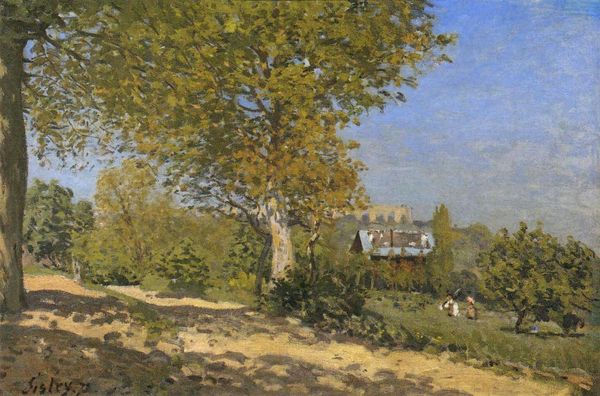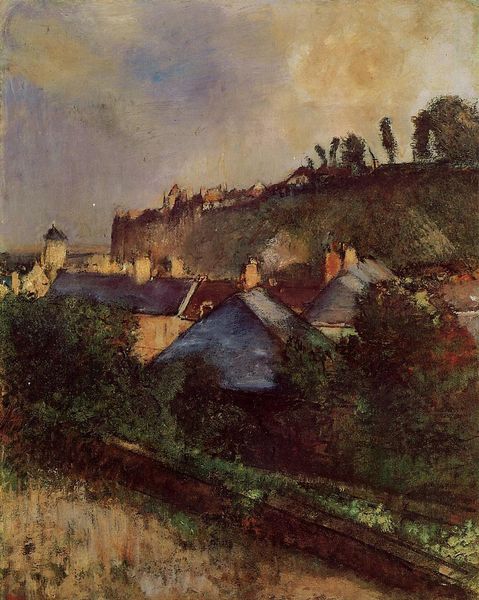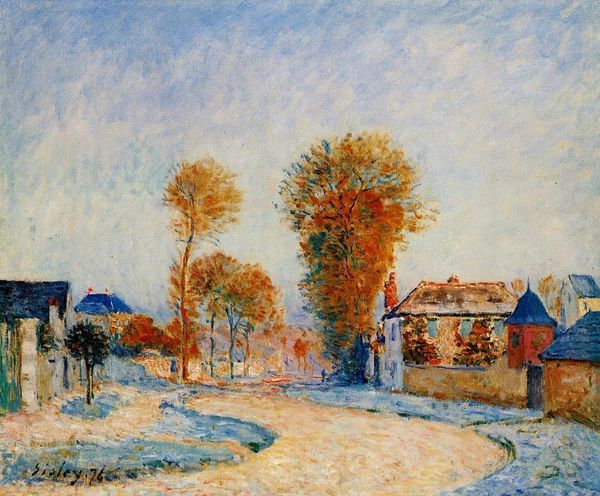
Dimensions: 38 x 55 cm
Copyright: Public domain
Editor: Here we have Camille Pissarro's "Landscape at Valhermeil," painted in 1878, using oil on canvas. The brushstrokes are so visible, creating a textured surface. What strikes me most is the interplay of light and shadow; it's quite captivating. How do you see this piece? Curator: Indeed. Observe how Pissarro manipulates the chromatic scale. The subdued palette, dominated by earth tones, serves not to replicate the landscape literally, but to construct a formal arrangement. The brushstrokes, as you noted, operate semiotically; they are not merely representational but contribute to a reading of the painting as a constructed object. Editor: So, you're saying the way it's painted is more important than what is painted? Curator: Precisely. The composition draws the eye along the path, a diagonal thrust countered by the solid mass of the buildings on the right. The figures are almost insignificant, mere punctuation marks within the formal grammar of the scene. Ask yourself, what purpose do they serve structurally? Editor: I guess they give a sense of scale and reinforce the recession into the distance, adding depth to the composition. I hadn't thought about them as purely compositional elements before. Curator: Exactly. We can appreciate the structural tension between the verticality of the trees and the horizontality of the rooftops. It is in this calculated orchestration of form that the work's true meaning resides, isn't it? Editor: It really changes how I see it! I'll definitely look more closely at the brushstrokes and shapes in other landscapes. Curator: Excellent. Formal analysis provides a rigorous approach to understanding artistic intention, removing the vagaries of subjective impression.
Comments
No comments
Be the first to comment and join the conversation on the ultimate creative platform.
